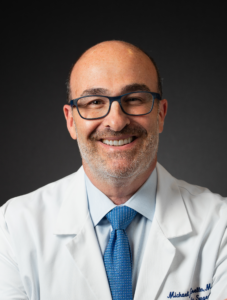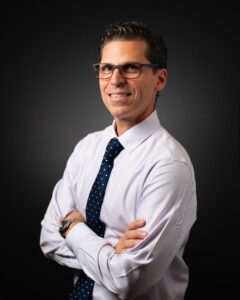Orthopedic Fracture Specialists

Emergency rooms are the place to go for severe and life-threatening injuries; however, many patients could be treated more comprehensively and cost-effectively in a doctor’s office. If you think you or a loved one has a non-life threatening injury such as a sprain or broken bone, you may not need to rush to the hospital emergency room. Advanced Orthopedics and Sports Medicine Institute’s orthopedic surgeons specializing in treating pediatric and adult fractures and injuries in NJ have experience with all types of fractures. With onsite X-ray machines, we can promptly diagnose and treat your injuries.
A fracture is a break of bone or cartilage, often accompanied by damage to the surrounding soft tissues. Fractures occur when the force applied to a bone exceeds its strength. The signs of a fracture can include swelling, tenderness, pain in the affected area, and more severe injuries, deformity, or open wounds. A doctor’s diagnosis and treatment are required to avoid permanent damage when you have broken bones.
Types of Fractures Treated at AOSMI
Injury or trauma is the most frequent cause of fracture. Still, conditions that weaken the bone, such as osteoporosis (reduced bone density), can make your bones prone to breaking. Injuries can be caused by low-energy impacts, such as a fall from standing or sitting, or high-energy impacts, like a car accident or a fall from a height (from a ladder, for instance). Other types of fractures include:
- Pathologic fractures – Bone affected by a osteoporosis, tumor or infection
- Stress fractures – Normal bone subjected to abnormal or unaccustomed stress
- Open fractures – Bone fractures that break through the skin, exposing the bone
Non-Operative Orthopedic Fracture Treatments
X-rays are the first diagnostic test and can often diagnose a fracture and direct treatment. If further detail is needed, CT scans, which can give a three-dimensional picture of the fracture, can be used. Sometimes a fracture isn’t evident on regular X-rays. Still, if suspected, a magnetic MRI scan may be necessary. Bone scans can also diagnose a fracture, particularly if you have a pacemaker or other metallic implants and can’t undergo an MRI.
Once the fracture is diagnosed and a non-operative treatment can be implemented, the fracture will be:
- Immobilized using a cast, brace or splint
- Possible reduction or manipulation of the fracture back to the correct alignment may be needed prior to immobilization
Surgical Procedures for Orthopedic Fractures
 Following diagnosis, treatment for hand fractures, shoulder fractures, foot fractures, and more may include standard surgical procedures, such as:
Following diagnosis, treatment for hand fractures, shoulder fractures, foot fractures, and more may include standard surgical procedures, such as:
- Internal fixation – Stabilization of the fracture with metal plates, screws, pins, wires or rods
- Open reduction – Broken bones are realigned after opening up the fracture
- Emergent treatment for open fractures (bone breaks skin) – Thorough rinsing of the fracture and stabilization
Frequently Asked Questions About Orthopedic Fractures
Q: What are the most common orthopedic fractures?
A: The most common orthopedic fractures can vary depending on factors such as age, activity level, and the type of trauma involved. However, some of the most frequently encountered fractures include:
- Wrist fractures: These often occur due to falls onto an outstretched hand.
- Ankle fractures: These can result from twisting injuries or falls.
- Hip fractures: These fractures typically occur in older individuals and are often associated with osteoporosis or significant trauma.
- Collarbone (clavicle) fractures: These are commonly seen following falls or direct blows to the shoulder region.
- Distal radius fractures: These are fractures of the forearm bone near the wrist, commonly seen in individuals of all ages
Q: What is the hardest fracture to treat?
A: Fractures that are considered the most challenging to treat are often those that involve complex joint injuries or fractures of bones with limited blood supply. For example, fractures around the joints, such as the elbow or the ankle, can be complex and require careful surgical intervention to achieve optimal outcomes. Fractures of the femoral neck (hip) or scaphoid (wrist) are also known to present treatment challenges due to limited blood supply to these areas.
Q: When should I go to the ER for fracture care?
A: It is generally recommended to seek immediate medical attention at an emergency room (ER) if you suspect you have a fracture. Common signs and symptoms that warrant an ER visit include severe pain, visible deformity or misalignment of a limb, inability to bear weight or use the affected area, open wounds with bone visible, or loss of sensation or circulation distal to the injury (numbness or pale skin). If you are uncertain about the severity of your injury, it is best to err on the side of caution and seek medical evaluation.
Q: What causes a bone fracture?
A: Bone fractures can occur due to a variety of causes, including trauma, falls, accidents, sports injuries, and repetitive stress. Fractures can also result from underlying conditions that weaken the bone, such as osteoporosis or certain types of tumors.
Q: Can a fracture heal itself?
A: In some cases, certain simple fractures can heal on their own with the help of immobilization, rest, and time. However, many fractures require medical intervention to ensure proper healing. Treatment options can range from non-surgical methods such as casting or splinting to surgical interventions, including the use of fixation devices like plates, screws, or rods to stabilize the fracture and promote healing.
It’s important to note that these answers are general in nature and may not apply to specific cases. If you have concerns about a fracture or suspect you have sustained a fracture, it is always best to consult with a healthcare professional for a thorough evaluation and appropriate treatment.
Find your Provider
 Michael J. Greller, MD, MBA, CPE, FAAOS
Michael J. Greller, MD, MBA, CPE, FAAOS
 Alan S. Nasar, MD, FAAOS
Alan S. Nasar, MD, FAAOS
 Stacey Gallacher, MD, FAAOS
Stacey Gallacher, MD, FAAOS
 Eric Buxbaum, DO
Eric Buxbaum, DO
 Justin Elkrief, DO
Justin Elkrief, DO
 Garret L. Sobol, MD
Garret L. Sobol, MD
 Wesley Nesbit, DPM
Wesley Nesbit, DPM
 Thomas A. Del Guercio, MD
Thomas A. Del Guercio, MD
 Ali Valimahomed, MD, FAAPMR
Ali Valimahomed, MD, FAAPMR
 Joseph Tauro, MD
Joseph Tauro, MD
 Edward J. Armbruster, DO, MBA
Edward J. Armbruster, DO, MBA







